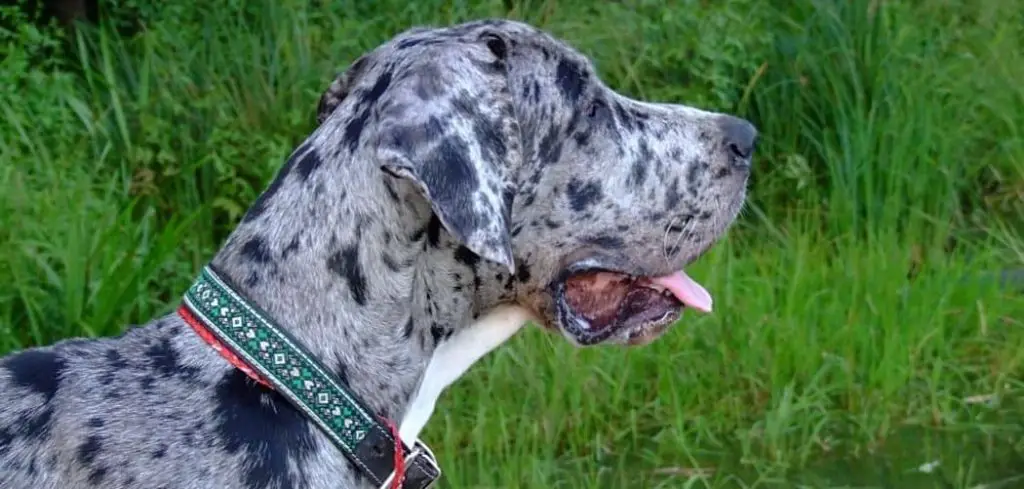When your dog is walking around with their tail down and refusing to eat, it can feel like a red flag waving in front of you.
Both of these symptoms signal that something might be wrong, and when they occur together, it’s often a sign of illness.
We outline the common causes of a dog holding its tail down and not eating, what you can do at home, and when to seek veterinary help.
Dog Tail Down and Not Eating — Why It Happens
A dog holding their tail down while refusing food is usually experiencing discomfort, fear, or a health issue. This behavior can be caused by a range of problems including injury (especially to the tail or spine), gastrointestinal upset, infection, emotional distress, or chronic pain.
In some cases, tail-down posture signals internal pain or inflammation, while a lack of appetite suggests the dog doesn’t feel well enough to eat. These signs should always be taken seriously.

Common Causes of Dog Tail Down and Not Eating
Limber Tail Syndrome
Limber tail, also known as “cold tail,” is a condition where the tail becomes flaccid and painful, often after overexertion or exposure to cold water. The base of the tail is usually sore, and dogs may avoid movement or interaction.
Because of the pain, dogs with limber tail may stop eating or appear lethargic.
You might notice your dog holding their tail completely down or slightly out, with discomfort when touched.
Although it usually resolves with rest and anti-inflammatory treatment, it’s painful enough to affect appetite and behavior.
Read more: Dog Shaking and Not Eating (Why it happens and how to help)
Spinal Injury or Nerve Pain
Injuries to the spine or pelvis can result in nerve compression, leading to a drooping tail and loss of appetite. Dogs with back pain might also hesitate to move, cry when touched, or show muscle stiffness.
Appetite loss may be linked to both the pain and the emotional stress of the injury. These cases require prompt veterinary evaluation, especially if mobility is affected.
Gastrointestinal Upset
Digestive problems like gastritis, pancreatitis, or even intestinal blockage can cause a dog to feel miserable. When the stomach or intestines are inflamed, nausea, vomiting, or abdominal pain can develop.
Some dogs react to these issues by lowering their tails and avoiding food. You may also see signs like drooling, restlessness, or whining.
Appetite loss combined with a tucked tail often indicates your dog is feeling quite unwell.
Stress, Anxiety, or Depression
Emotional distress can cause both a tail-down posture and appetite changes. Dogs may react to new environments, loud noises, separation, or traumatic events by withdrawing.
This behavior can look like your dog is sulking or depressed. They might refuse food, hide, or walk with their tail tucked low.
While this isn’t always a medical emergency, prolonged symptoms or rapid changes in behavior warrant a vet visit.
Anal Gland Problems
Full or infected anal glands are painful and can cause dogs to hold their tails low. They may scoot on the ground, lick obsessively at their rear, or seem generally uncomfortable.
Pain near the tail can make sitting and walking difficult. Combined with discomfort, dogs may lose interest in food.
Left untreated, anal gland infections can become serious or develop abscesses, so veterinary care is advised.
Infection or Fever
Systemic infections, such as tick-borne diseases, viral illnesses, or abscesses, can cause generalized malaise. Dogs may present with a drooping tail, loss of appetite, and low energy.
Fever often accompanies infections, making dogs feel achy and tired. The tail may be down simply due to the lack of energy or discomfort.
Veterinary testing is necessary to pinpoint the infection and begin appropriate treatment.
What to Do If Your Dog Is Tail Down and Not Eating
First, observe your dog closely. Check for signs of pain, swelling, or injuries, especially near the tail base, back, or hind end. Gently palpate to see if they react.
Encourage rest and offer bland, easy-to-digest food like boiled chicken and rice. If they refuse food for more than 24 hours or are showing additional symptoms like vomiting, trembling, or limping, contact your vet.
Reduce your dog’s stress. Offer a quiet, comfortable area away from noise or disruptions. Try hand-feeding or warming their food slightly to tempt them.
Monitor hydration. If your dog isn’t drinking, you can offer ice cubes or unseasoned broth. Dehydration can worsen quickly if left unaddressed.
Do not administer human medications unless directed by your vet. Pain relievers like ibuprofen or acetaminophen are toxic to dogs.
When to Call or Visit Your Vet
Seek veterinary attention right away if:
Your dog hasn’t eaten for more than 24 hours
They are lethargic, shaking, or showing signs of pain
Vomiting, diarrhea, or fever develops
They can’t lift their tail or seem to be in distress when trying to move
The tail appears swollen, limp, or bruised
You suspect an injury or have seen a fall or accident
Prompt diagnosis and treatment are crucial, especially if an injury or infection is involved. Even emotional causes benefit from professional guidance.
Read more: Dog Limping and Not Eating (What it means and what to do)
Key Takeaway
A dog with a tail down and no appetite is sending a clear signal that they aren’t feeling well. Whether it’s a physical injury, illness, or emotional issue, this behavior warrants close observation and often, a trip to the vet.
Pay attention to other signs and changes in your dog’s demeanor. Trust your instincts—you know your pet best, and catching a problem early can make all the difference.
